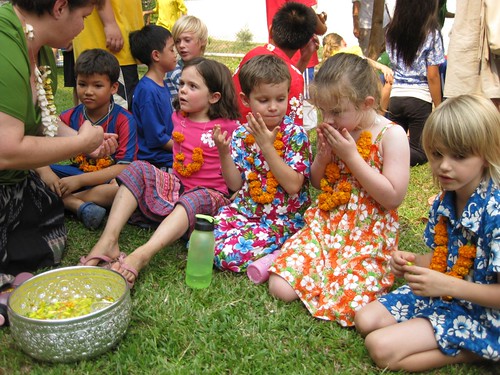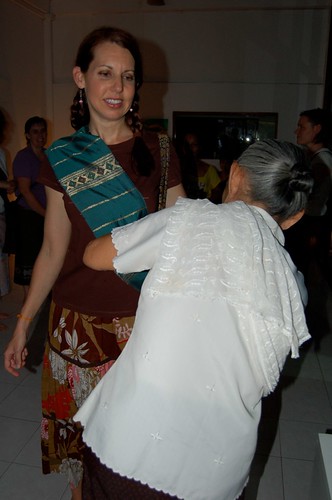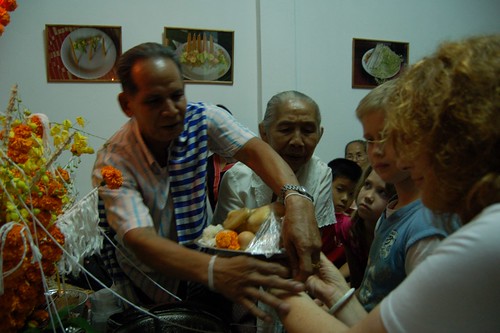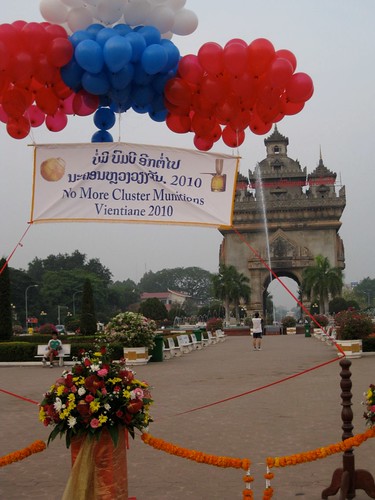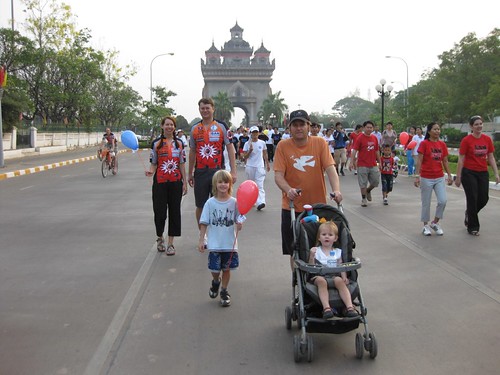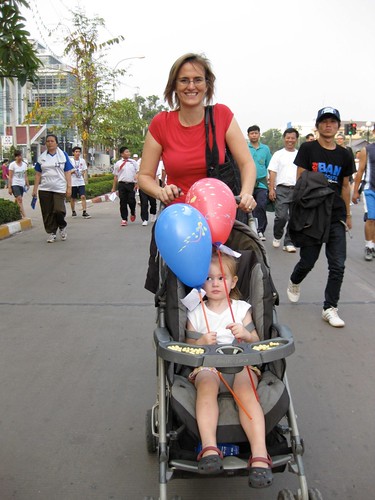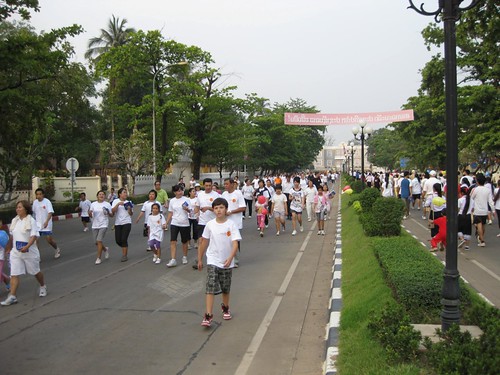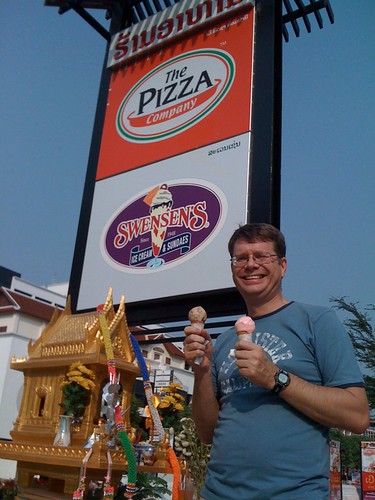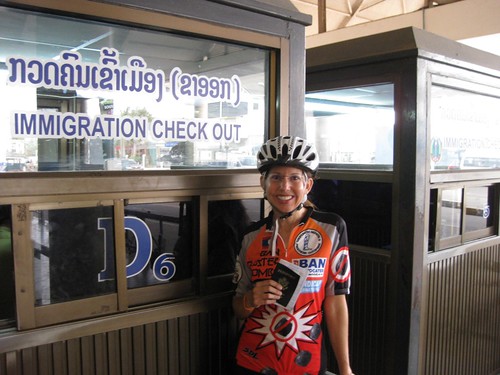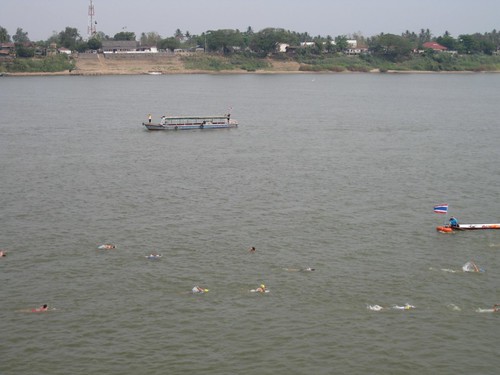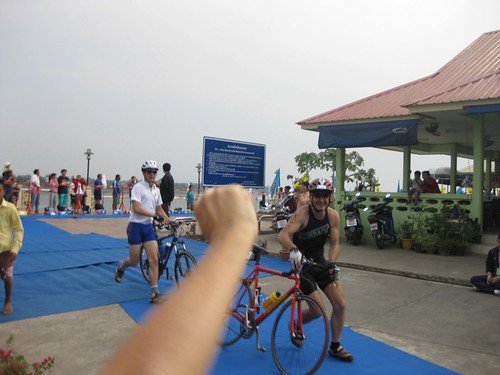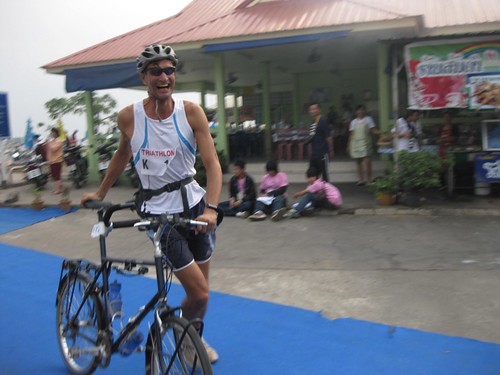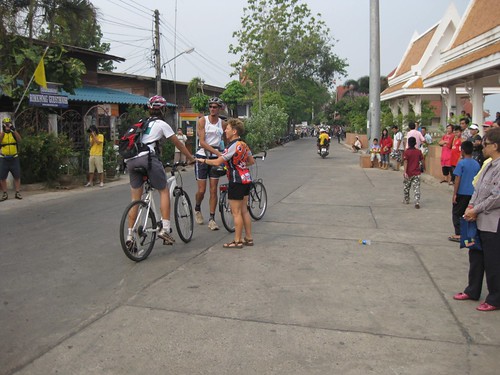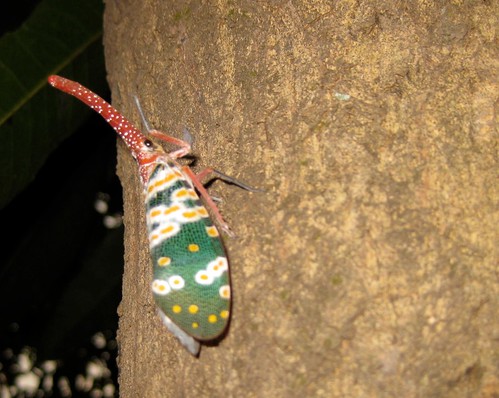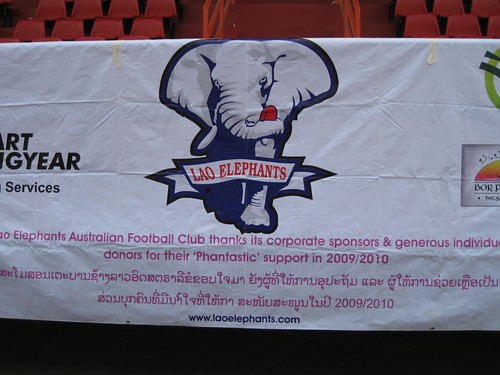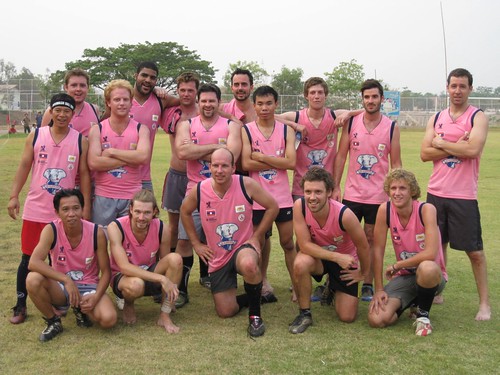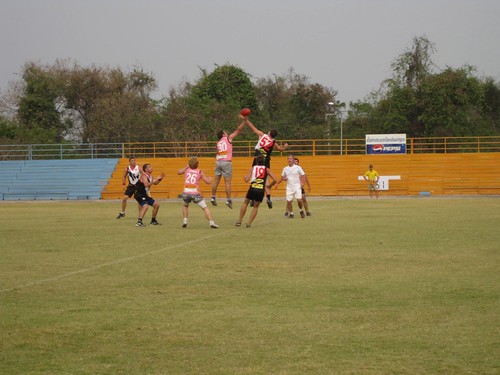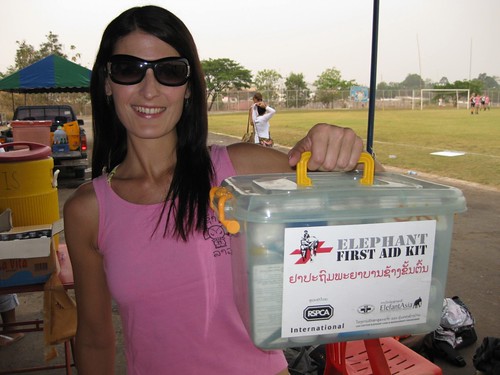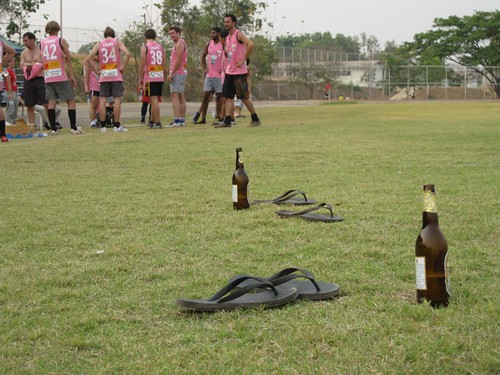Pii Mai (Lao New Year) is next week, and Vientiane is getting ready. Today our school held an assembly to mark the occasion.
I had noticed Hawaiian luau-style shirts for sale all over town lately, and I just figured they were hot with the tourists. Fortunately, my Lao colleagues set me straight: Flowers play a major role in celebrating Pii Mai (pronounced Pee My), so floral tops are de rigeur.
While running some errands on my bike, I stopped at a roadside stand and bought one for about $3.50. The guy looked me over and recommended an XL, but I grabbed a bright orange man’s style in a size large. Later, Tony bought one for himself, but his blue-and-white shirt was a size medium. It was even too small for me! Why, oh why, won’t men try on clothes before buying them? But I digress … At school today, he traded with my friend, Whetu, whose shirt was too big, so he and I both ended up in orange as though we’d planned it.
How cute are we?

The floral shirts definitely brightened up the school today. I especially loved the little boys who wore matching flowery shorts.
Our assembly included explanations and dramatizations of the Pii Mai traditions, music, a demonstration of water blessings and finally a big circle dance (although the clueless falang turned it into more of a dreamy mosh pit).
Afterwards, classes met on the lawn, where students blessed their teachers and asked for forgiveness. Isn’t that a fantastic tradition? Children dipped a small cup into a large silver bowl to scoop out some water and flower petals. They poured a little water on their teacher’s hands or neck and said, “Sok dee pii mai!” (Happy New Year!) and offered other good wishes. The teacher then used his or her wet hands to sprinkle some water back on the student. Because I’m not a grade-level teacher, I didn’t have a designated spot, but many of my students called me over to receive their blessing. It was really beautiful. I expected the children to get wild and silly with the water, but they were shockingly respectful.
A few shots from the assembly:
Out on the grass, we all participated in the water blessings.
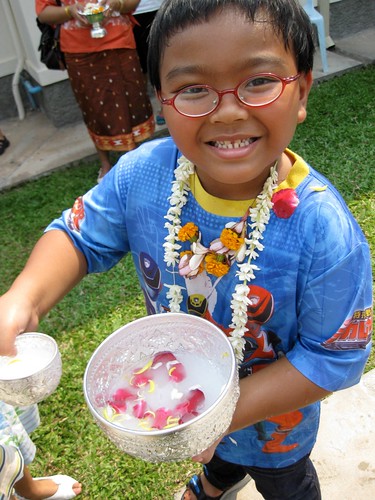
Here are some details about the Pii Mai holiday lifted from Wikipedia. According to our Lao staff, this is pretty accurate:
Water is used for washing homes, Buddha images, monks, and soaking friends and passers-by. Students first respectfully pour water on their elders, then monks for blessings of long life and peace, and last of all they throw water each other. The water is perfumed with flowers or natural perfumes. The idea of watering came from the legend of King Kabinlaphom, whose seven daughters kept his severed head in a cave. The daughters would visit their father’s head every year and perform a ritual to bring happiness and good weather.
Sand is brought to the temple grounds and is made into stupas or mounds, then decorated before being given to the monks as a way of making merit. There are two ways to make the sand stupas. One way is to go to the beach, and the other way is to bring sand to the wat, or pagoda. Sand stupas are decorated with flags, flowers, white lines, and splashed with perfumed water. Sand stupas symbolize the mountain, Phoukao Kailat, where King Kabinlaphom’s head was kept by his seven daughters.
Another way to make merit at this time is to set animals free. The Lao believe that even animals need to be free. The most commonly freed animals are tortoises, fish, crabs, birds, eels, and other small animals.
Flowers are gathered to decorate Buddha images. In the afternoons people collect fresh flowers. Senior monks take the younger monks to a garden filled with flowers, where they pick flowers and bring back to the wat to wash. People who didn’t participate in the flower picking bring baskets to wash the flowers so the flowers can shine with the Buddha statues.
There is an annual beauty pageant in Luang Prabang to crown Miss Bpee Mai Lao (Miss Lao New Year). There are many beauty pageants in Laos, but Luang Prabang – the old capital – is widely known for its Nangsoukhane pageant. There are seven contestants, each one symbolizing one of King Kabinlaphom’s seven daughters.
During Lao New Year, there are many spectacles including traditional Lao music, mor-lam, and ram-wong (circle dancing). During the daytime almost everybody is at the temple worshipping, hoping to have a healthier and happier life in the new year. During the evening, people of all ages go to the wat for entertainment.

